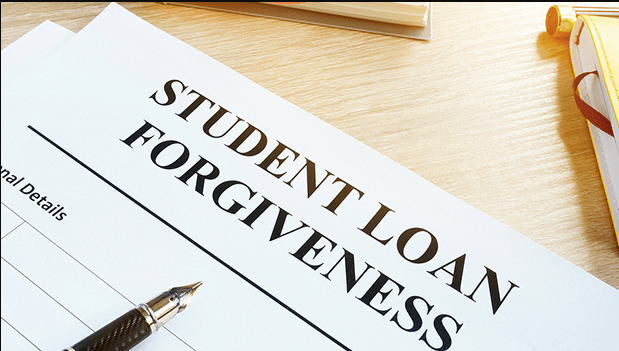
In recent years, the burden of student loans has weighed heavily on countless graduates across the United States. The quest for higher education often comes with a substantial financial price tag, and Connecticut is no exception to this predicament. However, there is a glimmer of hope for those struggling with the weight of their educational debts. Connecticut, like several other states, has introduced various student loan forgiveness programs to alleviate this financial strain. In this comprehensive guide, we’ll delve into the intricacies of student loan forgiveness Ct, shedding light on the opportunities available to residents.
Understanding Student Loan Forgiveness
1. Federal vs. State Forgiveness Programs
Before delving into the specifics of Connecticut’s forgiveness programs, it’s essential to differentiate between federal and state-level initiatives. Are available nationwide, while state programs are tailored to address the unique needs of Connecticut residents.
2. Connecticut’s Commitment to Education
Connecticut, a state known for its dedication to education, offers several programs aimed at supporting its residents in pursuing higher education. These programs encompass various sectors, from healthcare to public service.
Connecticut’s Student Loan Forgiveness Programs
3. Teacher Loan Forgiveness
Connecticut recognizes the crucial role teachers play in shaping the future. The Teacher Loan Forgiveness Program aims to ease the burden on educators. Eligible teachers can receive forgiveness of up to $17,500 on their federal loans after completing five years of service in low-income schools.
4. Healthcare Professional Loan Repayment
For those in the healthcare sector, Connecticut offers the Healthcare Professional Loan Repayment Program. Medical practitioners, dentists, and other healthcare professionals can receive up to $75,000 in loan forgiveness in exchange for serving underserved communities.
5. Public Service Loan Forgiveness (PSLF)
Connecticut residents working in the public sector can benefit from the federal PSLF program. By making 120 qualifying payments while employed in public service roles, borrowers can have the remainder of their federal loans forgiven.
6. Military Service Loan Forgiveness
Connecticut National Guard members may be eligible for the Military Service Loan Forgiveness Program. This initiative offers loan forgiveness based on the length of service and the type of loans held by the individual.
Eligibility and Application Process
7. Who Qualifies for Forgiveness?
Eligibility for these programs varies depending on factors such as profession, income, and loan type. Each program before applying.
8. The Application Process
To access these forgiveness programs, applicants must follow a detailed application process, which includes verifying their eligibility, providing necessary documentation, and submitting their application within the specified timelines.
Benefits and Considerations
9. The Immediate Financial Relief
Student loan forgiveness in Connecticut provides immediate financial relief to graduates, allowing them to allocate their hard-earned money to other essentials, such as housing, healthcare, and savings.
10. The Long-Term Impact
Moreover, these programs have a long-term impact by incentivizing individuals to pursue careers in fields that are crucial to the state’s growth and development.
The Future of Student Loan Forgiveness
11. Advocacy for Expanded Programs
As the burden of student loans continues to grow nationally, there is a growing advocacy for expanding existing programs and introducing new ones to address the evolving needs of Connecticut residents.
12. Navigating Loan Forgiveness
Navigating the complexities of student loan forgiveness can be daunting. Seeking guidance from financial advisors and utilizing online resources can significantly ease the process. Read more…
Conclusion
Student loan forgiveness ct programs serve as a beacon of hope for residents burdened by educational debts. By exploring these opportunities, graduates can find the financial relief they need to pursue their dreams and contribute to the state’s growth. If you’re a Connecticut resident grappling with student loans, remember that help is available.
FAQs
1. How do I determine my eligibility for Connecticut’s student loan forgiveness programs?
To determine your eligibility, visit the official Connecticut state website or contact the program administrators directly. Each program has specific requirements, so it’s essential to review them carefully.
2. Can I apply for multiple student loan forgiveness programs simultaneously in Connecticut?
Programs as long as you meet the eligibility criteria for each one. However, it’s essential to understand the rules and limitations of each program.
3. How long does it typically take for loan forgiveness to be granted?
The processing time varies depending on the program and the completeness of your application. Monitoring your application status regularly and following up with program administrators as needed is advisable.
4. Are private student loans eligible for forgiveness in Connecticut?
Most forgiveness programs in Connecticut primarily target federal student loans. Private student loans may not be eligible for forgiveness through these state programs, but exploring options with your loan servicer is recommended.
5. Are there any tax implications associated with student loan forgiveness?
Yes, in some cases, forgiven student loans may be considered taxable income. It’s advisable to consult a tax professional or the program administrators for guidance on potential tax obligations.
Remember, student loan forgiveness programs can be a lifeline for those burdened by educational debt. Access the opportunities available to you and take the first step toward financial freedom.




